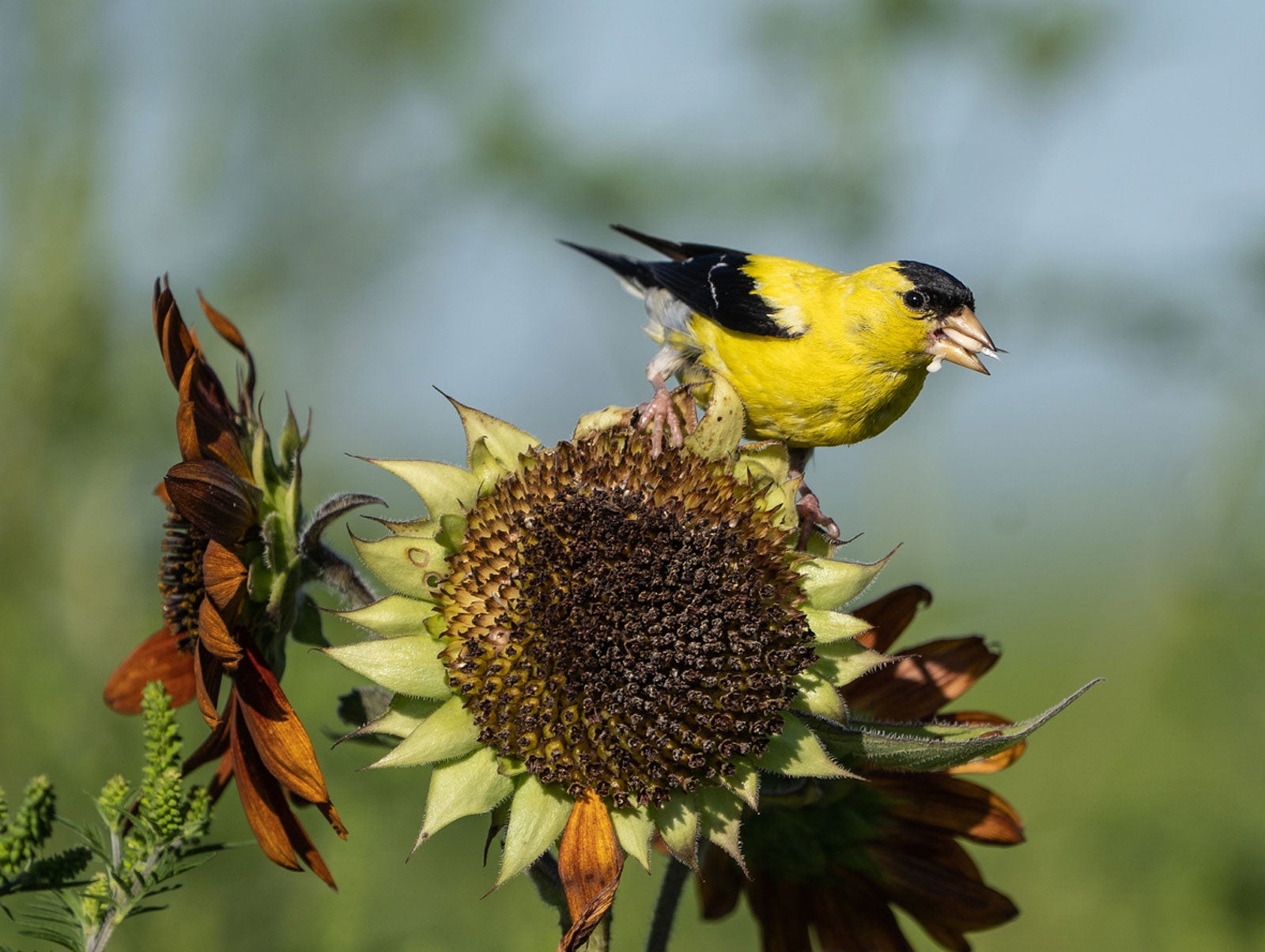Homegrown Birdseed: Growing Birdseed Plants In The Garden


Watching birds at the feeders can keep you entertained, and birds need the extra sustenance you provide, especially during long, cold winters. The downside is that quality birdseed can get expensive if you feed a lot of birds. Cheap birdseeds are messy and may be filled with seeds that birds won’t eat. All too often, budget birdseeds contain noxious weed seeds that may take over your garden. Who needs that?
The solution? Grow you own birdseed! Birdseed plants are beautiful and easy to grow. At the end of the season, you can use the seeds to make fresh, nutritious, homegrown birdseed.
Growing Plants for Feeding Birds
Sunflowers should always be included in homegrown birdseed. The seeds provide energy for many birds, including finches, nuthatches, juncos, chickadees, cardinals, and grosbeaks, among others. These easy-to-grow plants are available in a variety of sizes.
Zinnias bring bright color to your garden, and they’re easy to grow by seed. Choose dwarf varieties that max out at 8 to 12 inches (20-31 cm.), or gigantic plants that may reach heights of 3 to 8 feet (1-2 m.). Zinnia seeds are highly prized by sparrow, finches, juncos, and chickadees.
Globe thistle is a perennial suitable for growing in USDA plant hardiness zones 3 through 8. The round, bluish purple flower heads produce seeds that attract goldfinches.
Russian sage is a bushy perennial that resembles lavender. You’ll enjoy the bluish purple blooms, and the seeds will draw a variety of birds. Russian sage is suitable for growing in zones 5 through 10.
Other suggestions for homemade bird food mix include:
Gardening tips, videos, info and more delivered right to your inbox!
Sign up for the Gardening Know How newsletter today and receive a free copy of our e-book "How to Grow Delicious Tomatoes".
Harvesting Homemade Bird Food Mix
Harvesting seeds from birdseed plants is easy, but timing is all-important. They key is to harvest seeds when they’re ripe, but before the birds can gobble them up.
Cut wilted flowers from the plant as soon as the blooms turn brown and seeds appear, or when the seeds are slightly green. Toss the blooms in a paper sack. Set it aside and shake it every day for a couple of weeks, or until the seeds are completely dry. Give the sack a final shake to separate the seeds from the blooms.
Store the seeds in a paper sack or a lidded glass jar. Don’t worry about stems or petals mixed with the seeds; birds won’t mind.
When ready, you can combine the seeds and put the homemade bird food mix out in your feeders or include them in peanut butter treats and suet mixes (Melt about a cup of vegetable shortening or lard and mix with a cup of crunchy peanut butter, 2-3 cups of cornmeal, and your homemade birdseed. You can add in some fruit too. Put into a suet mold and freeze until firm and ready to use.)
It really isn’t necessary to harvest seeds at all. Just leave the plants in the garden in fall, and the birds will help themselves to the buffet. Wait and tidy up the garden in spring. Similarly, you can save yourself a lot of time by not removing sunflower seeds from the seed head. Cut wilted blooms from the plants and leave them in strategic places around your garden. Birds are well-equipped for picking seeds from the blooms.

A Credentialed Garden Writer, Mary H. Dyer was with Gardening Know How in the very beginning, publishing articles as early as 2007.